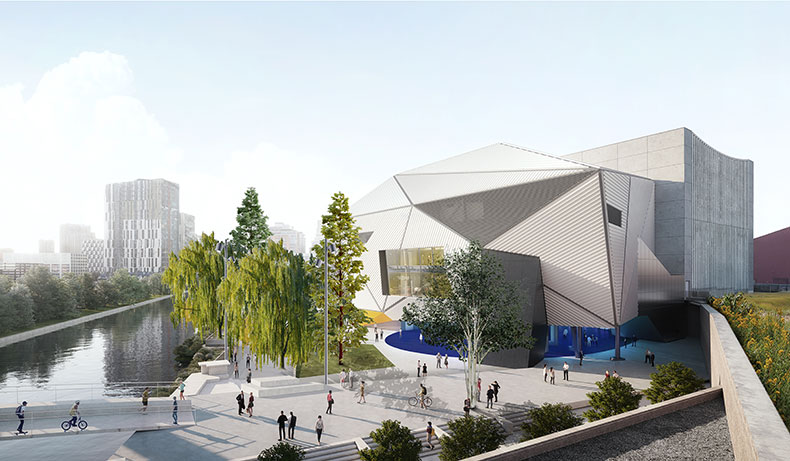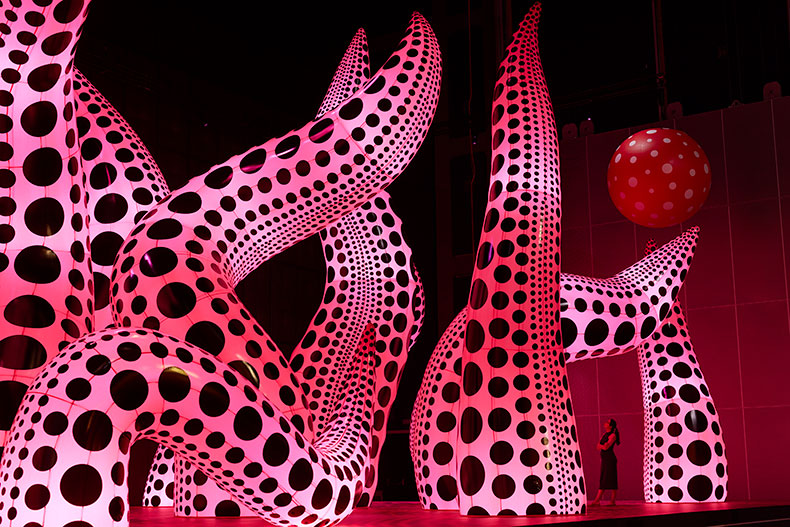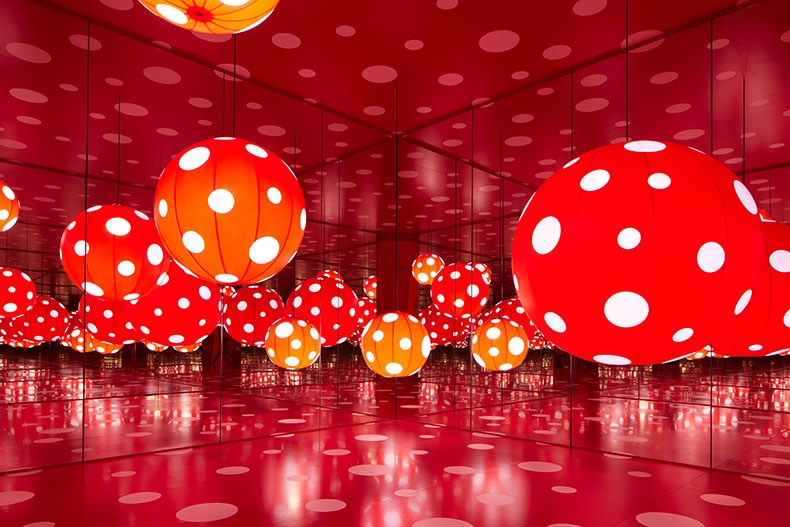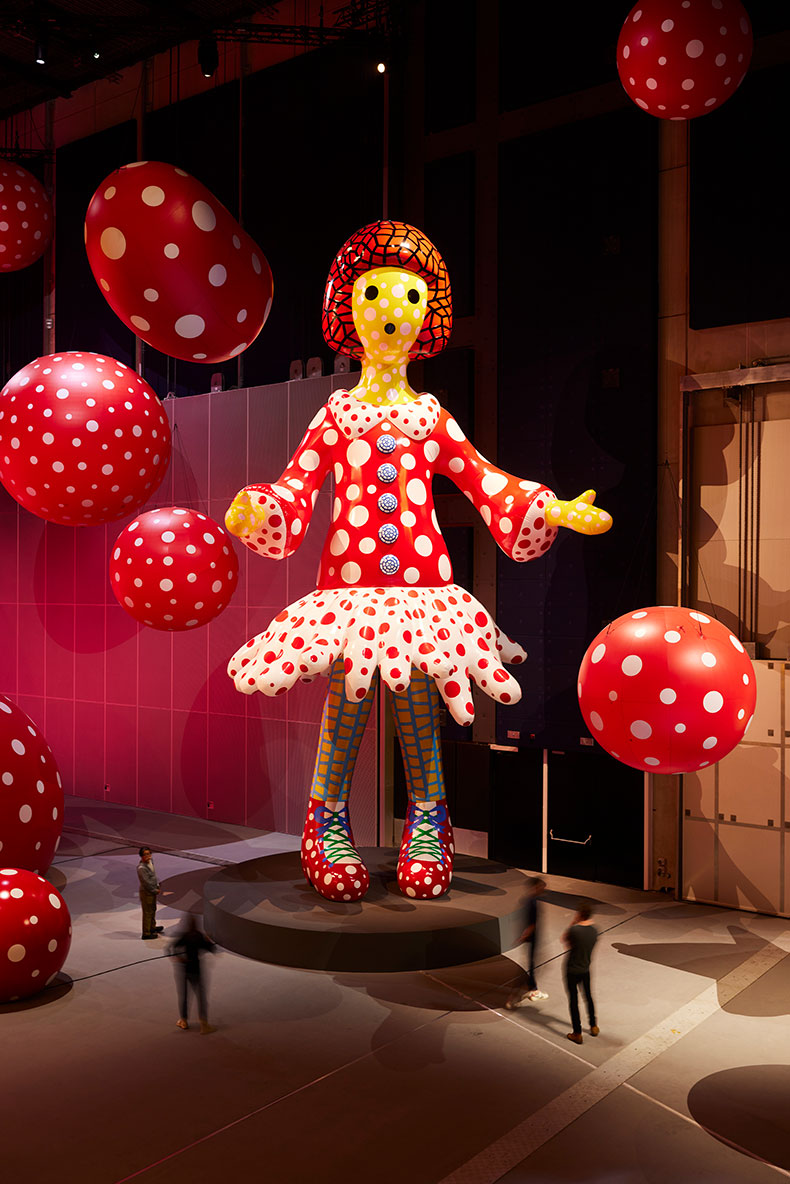They may have sold their naming rights to a multinational insurance company for a cool £35m, but to the guy driving our bus from the station, it was still ‘Factory’. More than five years in the making and over 20 metres high, Aviva Studios was not quite ready in time for its inaugural turn as the new home of the Manchester International Festival. ‘This is a preview,’ insists the festival’s artistic director John McGrath at the opening press conference. ‘It’s not quite finished, but I think we’ve done a pretty good job of cleaning it up for you.’
Still surrounded by temporary fencing with hard-hatted, hi-vis-jacketed men milling around the perimeter, there didn’t seem to be a good spot where one could really stand and fully take in the building’s angular, polyhedral heft and much of the interior remained out of bounds. But walking through its revolving doors, you are immediately greeted by a foyer with an impressively broad sweep to it, past lots of exposed concrete and repurposed I-beams with a few little nods here and there to Ben Kelly’s design of Factory Records’ original Haçienda nightclub: a bright orange grille here, some black-and-red hazard stripes there.

A render of Aviva Studios in Manchester by Office for Metropolitan Architecture (OMA)
At the end of the hall, the building butts on to a line of old Victorian railway arches (the site used to be the car park for Granada TV – eagle-eyed soap fans might recognise the arches as the former site of Kevin Webster’s garage from Coronation Street). Everything feels very open and spacious; the bits that are old rub against the bits that are very modern-looking in a way that feels pleasingly jarring.
But the star draw is undoubtedly the big Yayoi Kusama show in the main warehouse space. ‘Big’ is actually something of an understatement here. It’s an enormous show: Kusama’s largest installation yet and the biggest-ever exhibition of inflatable sculptures, built especially by the artist for this vast 61- by 32-metre space. That’s approximately the size of three professional tennis courts. There are dozens and dozens of works here, the biggest of which – a giant polka dot squash called Life of the Pumpkin Recites, All About the Biggest Love for the People (2019) – measures 1,000 metres-cubed.
The last time I saw one of Kusama’s signature cucurbita, it was midnight and I was walking along the coast of the Japanese island of Naoshima, trying to find my way back our Airbnb. It sat there, plump and torpid on its own little jetty facing out on to the Seto inland sea and there was something deeply uncanny about its gaudy colours amid the calm of night and the cool light of the moon. Here, by contrast, it feels oddly desultory, plonked down like a surly toddler. At one point, I saw it deflate slightly, slumping inchmeal to the earth. As it re-inflated, the little black and yellow stalk at the top was the last bit to stiffen, springing vulgarly to attention some moments after the rest had fully dilated.

A Bouquet of Love I Saw in the Universe (2021), Yayoi Kusama. Photo: © David Levene
At one end of the hall, there’s a forest of Barbie-pink tentacles, 16 in all, each one as tall as a house, snaking sinuously up towards the ceiling. They make playful use of the space, inviting visitors to duck under and around their questing curves. Everyone is ignoring the written interdictions on touching the artworks, prodding and even hugging these phallic latex sleeves with abandon. Above it all, Kusama in matching pink wig stares out from a video screen, singing blithely to herself and gesturing with her arms, like some capricious child-emperor marshalling its toys into battle.
There are a handful of Easter eggs concealed in the various blobby elements dotted about the room. A big red spotted sphere titled Dots Obsession (2013) hides one of Kusama’s celebrated Infinity Rooms: inside the sphere, a cube with mirrored walls and four more floating balls multiply – along with any visitors – in the mutually reinforcing reflections. Its smaller neighbour (bearing the same title) offers a peephole into an even more dizzying glimpse of infinitude – with one’s own eye staring eerily back out from the centre of it all.

Dots Obsession (2013) ,Yayoi Kusama. Photo: © David Levene
Everyone here is posing and taking pictures of themselves with the works. It can be hard to tell precisely where Kusama stands on the selfie culture alongside which her work has rocketed to global success over the last few decades. She has been variously accused of uncritically encouraging an aesthetic of narcissism. But one sculpture suggests something darker at work beneath the surface. At 12 metres in height, the tallest (though still not quite the most capacious) of the works on display is an anime-like inflated girl, titled Yayoi-chan (2012–23). With her short skirt flaring out high above gallery-goers’ heads, it’s literally impossible to take a selfie with this work without finding oneself in the position of an ‘upskirting’ creep photographer, one of the more repugnant consequences of omnipresent digital cameras (especially in Kusama’s native Japan, where several prefectures have had to draft specific laws against the practice). It’s one of the more uncomfortable moments in the show, for the first time implicating the gaze of its own audience and accusing it of complicity in exploitation. Perhaps Kusama’s work has more teeth than it has been given credit for.

Yayoi-chan (2012–23), Yayoi Kusama. Photo: © David Levene
Aviva Studios, Manchester is now open. The Manchester International Festival runs until 16 July.












![Masterpiece [Re]discovery 2022. Photo: Ben Fisher Photography, courtesy of Masterpiece London](http://zephr.apollo-magazine.com/wp-content/uploads/2022/07/MPL2022_4263.jpg)
Apollo at 100